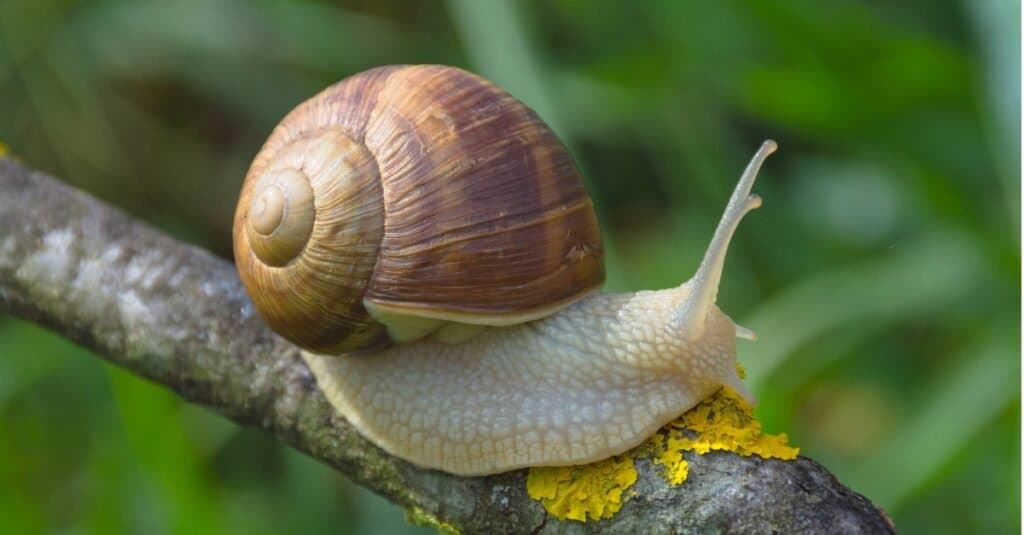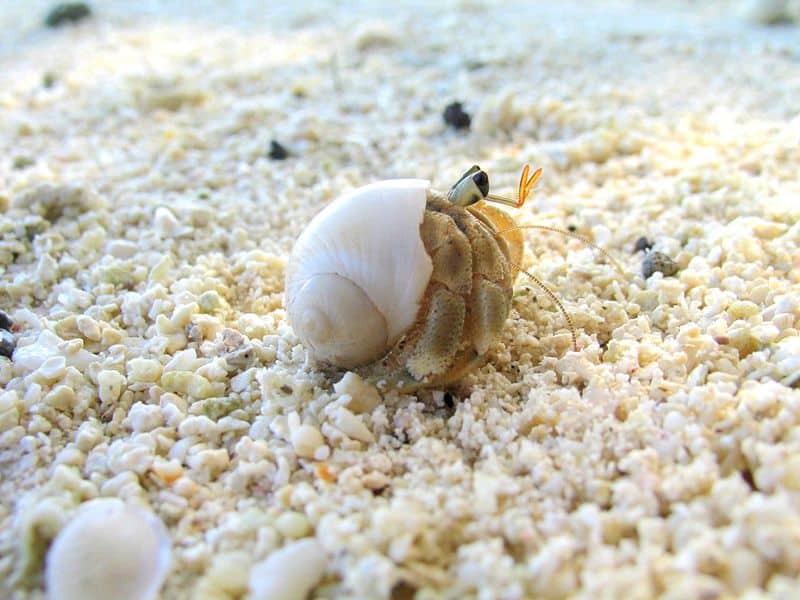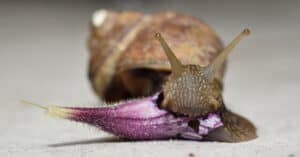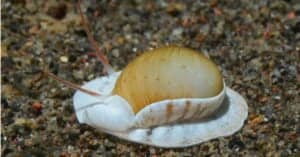Are Snails Born With Shells?
@media (min-width: 481px) {
.mobile-top-content {
display: none;
}
}
#mobileTopContentCTACarouselControls { overflow: hidden; text-overflow: ellipsis; white-space: nowrap; }
.mobile-top-content .more { color: #fff; }
.mobile-top-content a { color: #fff; text-decoration: underline; }
.mobile-top-content a:hover { color: #fff; text-decoration: underline; }
@media (max-width: 480px) {
.mobile-top-content {
background-color: #06a10b;
color: #fff;
text-align: center;
/*height: 60px;
padding-top:5px;*/
font-size:80%;
/* display: block; */
margin: 0px -30px;
}
}
Snails are mysterious little creatures that are present in almost every backyard garden across the world. We’ve all been walking and have discovered an empty snail shell, but how did it get there? We know that snails have shells, but where do they get them from? Do they leave them for larger ones as they get older? Let’s learn all that and more: Are Snails Born With Shells?
Are snails born without shells?

iStock.com/1284919455
Snails lay eggs, usually burying them in dirt and leaving them to their own devices. When they are born, however, do they have shells? Well, they do, in fact! After the 2-4 weeks that it takes for baby snails to hatch, they emerge from their eggs as tiny creatures, but they have equally tiny shells atop their bodies. Snails are born with shells, although they are significantly smaller than they will soon grow to be.
Still, even knowing that information doesn’t clear up the rest of the missing information about snails and their shells (or lack thereof). Let’s explore further.
Do all snails have shells?

Billy Watkins/Shutterstock.com
There are snails all over the world in almost every environment. From ponds to gardens and everywhere in between, snails can be found slowly making their way to their next food source. Do all those different species of snails have shells, though?
Yes, in fact, it’s one of the defining characteristics of snails! Snails are gastropods that belong to the Mollusca family. The other famous gastropod that snails are similar to are slugs! In fact, snails and slugs are so closely related that their main differentiator is their shell. A gastropod without a shell is known as a slug, and vice versa. They aren’t the same species, but the presence of the shell is what classifies the organism as a snail.
Can you take a snail out of it’s shell?
Shells are an important feature of a snail’s biology. If you happened to pull a snail from a shell, it wouldn’t now be considered a slug; it would just be a dead snail. The shell is a key element and the structure on which the rest of the snail’s anatomy is built. As much as it seems an additional feature to a human, it’s essential.
The closest example for a human would be our skeletons. As vertebrates, our spine and skeleton help classify us as humans. Additionally, taking the skeleton out of a human wouldn’t turn us into some other creature, it would just make a dead (and rather floppy) human.
Knowing that, never take a snail out of its shell as this will kill it. They rely on their shells for their digestive systems, lung structure, and so much more.
How do snails grow their shells?

Snails have an incredible mechanism that allows their shells to grow with them. As they get older and larger, they have a special gland located on their shells mantle that begins excreting calcium carbonate, the stuff their shell is made of. The calcium carbonate deposit is added to the opening of the shell, adding a layer. As time goes on, these layers add up to make a longer and larger shell for the snail to live in. Looking at a snail’s shell closely, you can see the individual deposits that make up the shell. These “rings” can show just how long the snail has been around and adding to its shell!
When a snail is born, it immediately eats its egg casing because of the extra calcium that it contains. For a small and vulnerable snail, hardening its shell is a top priority! Since they are born with small, thin shells, the baby snail will need to eat well for three months before it is able to have a fully mature shell. Some baby snails are even known to eat their own siblings in their eggs to help “speed up” the process and get that extra calcium from another snail’s shell!
What animals use snail shells?

When a snail dies, their calcium-based shells last much longer than their soft bodies do. In the ocean, in particular, snail shells provide homes for a creature that many of us all know and love – hermit crabs! Hermit crabs get their name from a particular behavior that sets them apart from most other animals. Instead of growing its own shell or carapace like other animals, a hermit crab prefers to co-opt the shells of dead sea snails! Their names come from this behavior of finding new homes made by other animals as they get older.
A hermit crab has a specially designed abdomen that it shoves into snail shells, locking them in place. They are very picky about their shells. Generally, they prefer shells that are good fitting, don’t have large openings, and are watertight (without any holes). When they grow too large for their current shell, they simply migrate to a newer and bigger one! This process wouldn’t be possible if it wasn’t for the shell-making capabilities that all snails have.
Can snails hide in their shells?
Shells wouldn’t be much use if they didn’t do anything! For a snail, their shells offer the ultimate protection from predators. When they feel threatened, a snail will retreat into its shell, leaving on their “foot” to cover the opening. For birds and other large animals, getting through the tough outer shell is a real challenge that isn’t worth the slimy food inside.
A snail’s shell is also a place where a snail can hide from inclement weather. When the weather is too hot and dry, retreating into their shells is a viable survival strategy that can help them last longer without drying out. Once they are in their shells, conserving moisture is much easier.
More from A-Z Animals
.more-snake-card-image { max-height:140px !important; }
@media (min-width: 481px) {
.mobile-top-content {
display: none;
}
}
#mobileTopContentCTACarouselControls { overflow: hidden; text-overflow: ellipsis; white-space: nowrap; }
.mobile-top-content .more { color: #fff; }
.mobile-top-content a { color: #fff; text-decoration: underline; }
.mobile-top-content a:hover { color: #fff; text-decoration: underline; }
@media (max-width: 480px) {
.mobile-top-content {
background-color: #06a10b;
color: #fff;
text-align: center;
/*height: 60px;
padding-top:5px;*/
font-size:80%;
/* display: block; */
margin: 0px -30px;
}
}
Snails are mysterious little creatures that are present in almost every backyard garden across the world. We’ve all been walking and have discovered an empty snail shell, but how did it get there? We know that snails have shells, but where do they get them from? Do they leave them for larger ones as they get older? Let’s learn all that and more: Are Snails Born With Shells?
Are snails born without shells?

iStock.com/1284919455
Snails lay eggs, usually burying them in dirt and leaving them to their own devices. When they are born, however, do they have shells? Well, they do, in fact! After the 2-4 weeks that it takes for baby snails to hatch, they emerge from their eggs as tiny creatures, but they have equally tiny shells atop their bodies. Snails are born with shells, although they are significantly smaller than they will soon grow to be.
Still, even knowing that information doesn’t clear up the rest of the missing information about snails and their shells (or lack thereof). Let’s explore further.
Do all snails have shells?

Billy Watkins/Shutterstock.com
There are snails all over the world in almost every environment. From ponds to gardens and everywhere in between, snails can be found slowly making their way to their next food source. Do all those different species of snails have shells, though?
Yes, in fact, it’s one of the defining characteristics of snails! Snails are gastropods that belong to the Mollusca family. The other famous gastropod that snails are similar to are slugs! In fact, snails and slugs are so closely related that their main differentiator is their shell. A gastropod without a shell is known as a slug, and vice versa. They aren’t the same species, but the presence of the shell is what classifies the organism as a snail.
Can you take a snail out of it’s shell?
Shells are an important feature of a snail’s biology. If you happened to pull a snail from a shell, it wouldn’t now be considered a slug; it would just be a dead snail. The shell is a key element and the structure on which the rest of the snail’s anatomy is built. As much as it seems an additional feature to a human, it’s essential.
The closest example for a human would be our skeletons. As vertebrates, our spine and skeleton help classify us as humans. Additionally, taking the skeleton out of a human wouldn’t turn us into some other creature, it would just make a dead (and rather floppy) human.
Knowing that, never take a snail out of its shell as this will kill it. They rely on their shells for their digestive systems, lung structure, and so much more.
How do snails grow their shells?

Snails have an incredible mechanism that allows their shells to grow with them. As they get older and larger, they have a special gland located on their shells mantle that begins excreting calcium carbonate, the stuff their shell is made of. The calcium carbonate deposit is added to the opening of the shell, adding a layer. As time goes on, these layers add up to make a longer and larger shell for the snail to live in. Looking at a snail’s shell closely, you can see the individual deposits that make up the shell. These “rings” can show just how long the snail has been around and adding to its shell!
When a snail is born, it immediately eats its egg casing because of the extra calcium that it contains. For a small and vulnerable snail, hardening its shell is a top priority! Since they are born with small, thin shells, the baby snail will need to eat well for three months before it is able to have a fully mature shell. Some baby snails are even known to eat their own siblings in their eggs to help “speed up” the process and get that extra calcium from another snail’s shell!
What animals use snail shells?

When a snail dies, their calcium-based shells last much longer than their soft bodies do. In the ocean, in particular, snail shells provide homes for a creature that many of us all know and love – hermit crabs! Hermit crabs get their name from a particular behavior that sets them apart from most other animals. Instead of growing its own shell or carapace like other animals, a hermit crab prefers to co-opt the shells of dead sea snails! Their names come from this behavior of finding new homes made by other animals as they get older.
A hermit crab has a specially designed abdomen that it shoves into snail shells, locking them in place. They are very picky about their shells. Generally, they prefer shells that are good fitting, don’t have large openings, and are watertight (without any holes). When they grow too large for their current shell, they simply migrate to a newer and bigger one! This process wouldn’t be possible if it wasn’t for the shell-making capabilities that all snails have.
Can snails hide in their shells?
Shells wouldn’t be much use if they didn’t do anything! For a snail, their shells offer the ultimate protection from predators. When they feel threatened, a snail will retreat into its shell, leaving on their “foot” to cover the opening. For birds and other large animals, getting through the tough outer shell is a real challenge that isn’t worth the slimy food inside.
A snail’s shell is also a place where a snail can hide from inclement weather. When the weather is too hot and dry, retreating into their shells is a viable survival strategy that can help them last longer without drying out. Once they are in their shells, conserving moisture is much easier.





